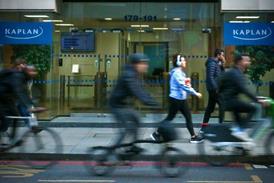Residents of 'extensively glassed' apartments overlooked by a new extension of London's Tate Modern gallery have failed in an attempt to prevent people enjoying a panoramic viewing gallery from peering through their windows.
In Neo Bankside Residents v Tate Gallery, Mr Justice Mann dismissed a claim by the owners of four flats that the Tate walkway creates a nuisance and infringes their article eight right to privacy under the Human Rights Act.
The dispute arose in 2016 when a viewing gallery was opened around the Blavatnik Building, an extension to the Tate Modern. In his judgment, Mann J describes the all-round view from the walkway as 'rather splendid... though differing views were expressed in the case about the merits of the view of South London'. Views from the neighbouring glass-walled Neo Bankside flats were also described as 'impressive' and the reason why the claimants bought them in the first place. 'Unfortunately, if occupants can see out then outsiders can see in,' the judge noted.
One claimant, who had bought an eighteenth floor flat in 2014, told the court how visitors to the gallery 'waved, made obscene gestures and photographed and filmed the family in the apartment'. The judge described the claimants as 'all honest witnesses who gave evidence of their subjective experiences in a sincere manner and without intended exaggeration'.
The claimants sought an injunction requiring the management of Tate Modern, as a 'hybrid public authority', to prevent members of the public and others observing the flats.
In his 70-page judgment, Mann J concludes that all parties - including the developers of Neo Bankside - had been 'aware' of the viewing gallery 'but did not think through the consequences of overlooking, and looking into, the flats'. After visiting the site the judge found that a 'very significant number of visitors display an interest in the interiors of the flats which is more than a fleeting or passing interest'. The intrusion was material in the everyday meaning of the word, he said.
However any direct claim under the Human Rights Act hinged on whether the Tate Galley is a public authority. Mann J ruled that, despite factors such as the gallery's foundation by statute and receipt of some public funding, it was not. On the claim for nuisance caused by invasion of privacy, the judge noted that the flats are in an inner city urban environment where an occupier 'can expect to live quite cheek by jowl with neighbours'. While the properties are 'impressive' that comes 'at a price in terms of privacy'.
The judge also found that residents had 'created their own additional sensitivity to the inward gaze' by adapting their outward looking 'winter gardern' area into a living space and in any case could install privacy film or net curtains. He ruled that there was no actionable nuisance and that the claim be dismissed, subject to the Tate undertaking to encourage visitors to respect neighbours' privacy.
Real estate and private client firm Forsters, which represented the claimants, said the residents are considering an appeal.
Tom Weekes QC and Richard Moules, instructed by London firm Forsters, appeared for the claimants; Guy Fetherstonhaugh QC, Aileen McColgan and Elizabeth Fitzgerald, instructed by international firm Herbert Smith Freehills, for the defendant.

















![David Lester (senior partner at Blythe Liggins), Darryl Barnes, Jagdeep Sandher (head of dispute resolution at Blythe Liggins)[4]](https://d1d8vslyhr7rdg.cloudfront.net/Pictures/274x183/4/2/8/116428_davidlesterseniorpartneratblytheligginsdarrylbarnesjagdeepsandherheadofdisputeresolutionatblytheliggins4_981603_crop.jpg)






11 Readers' comments